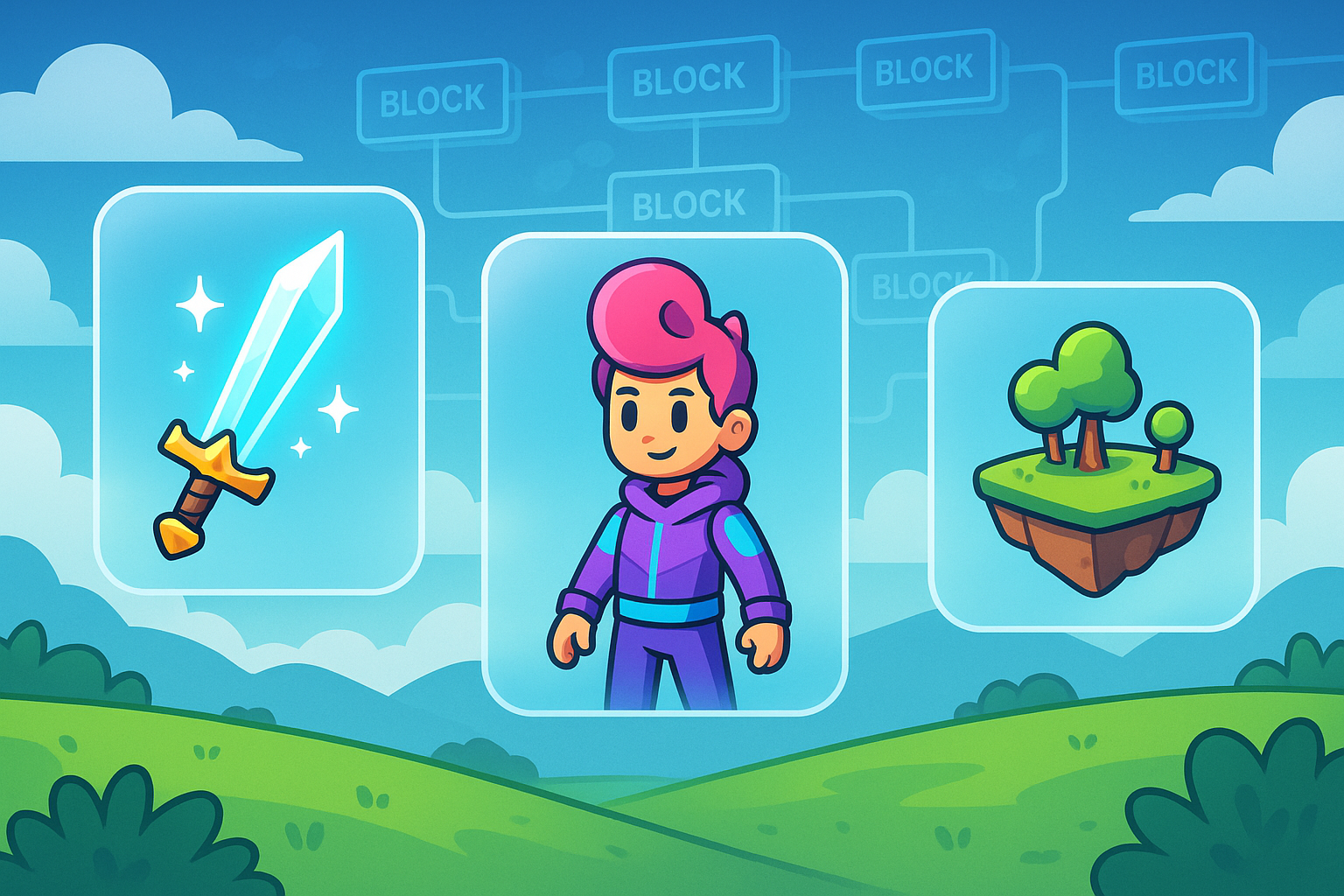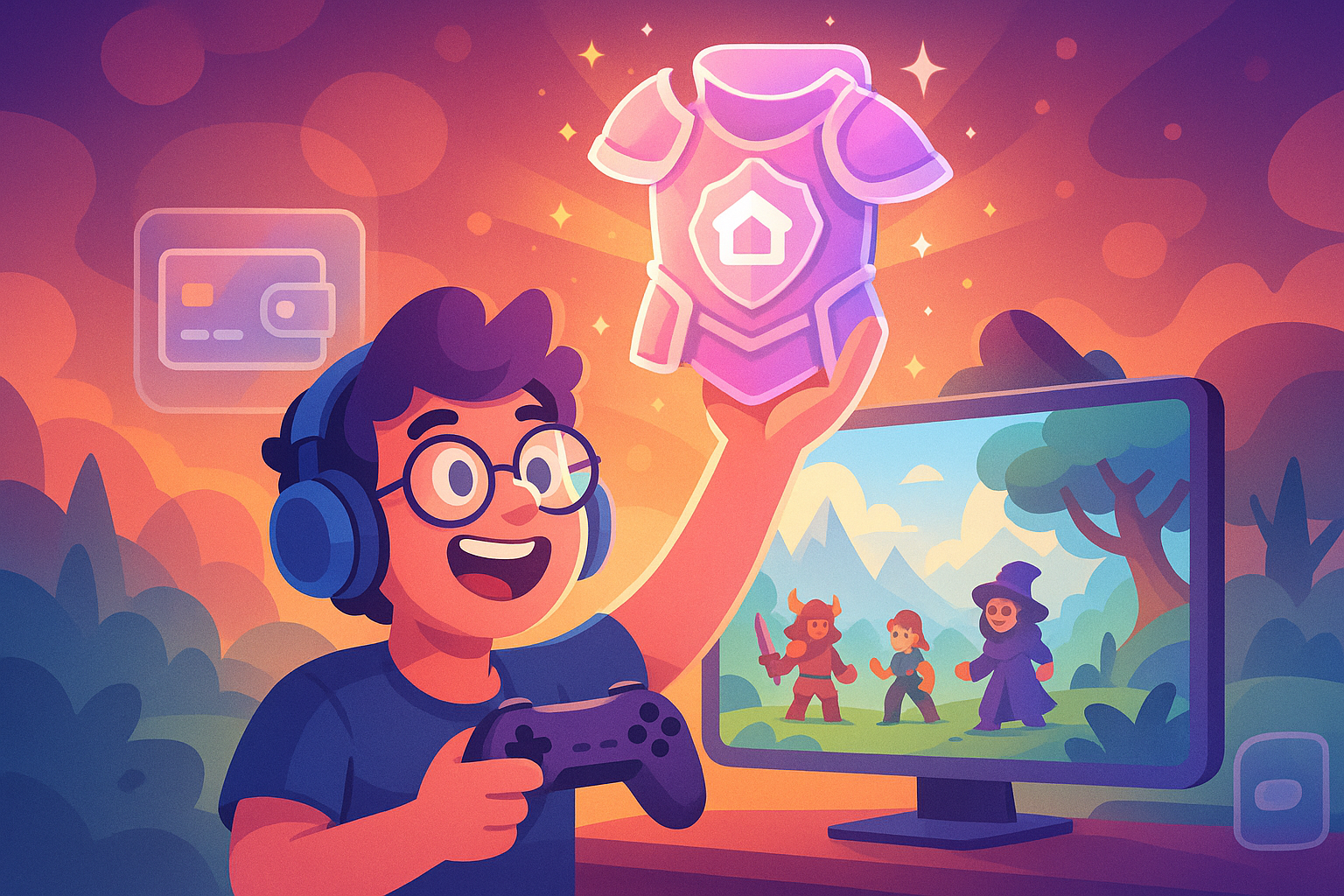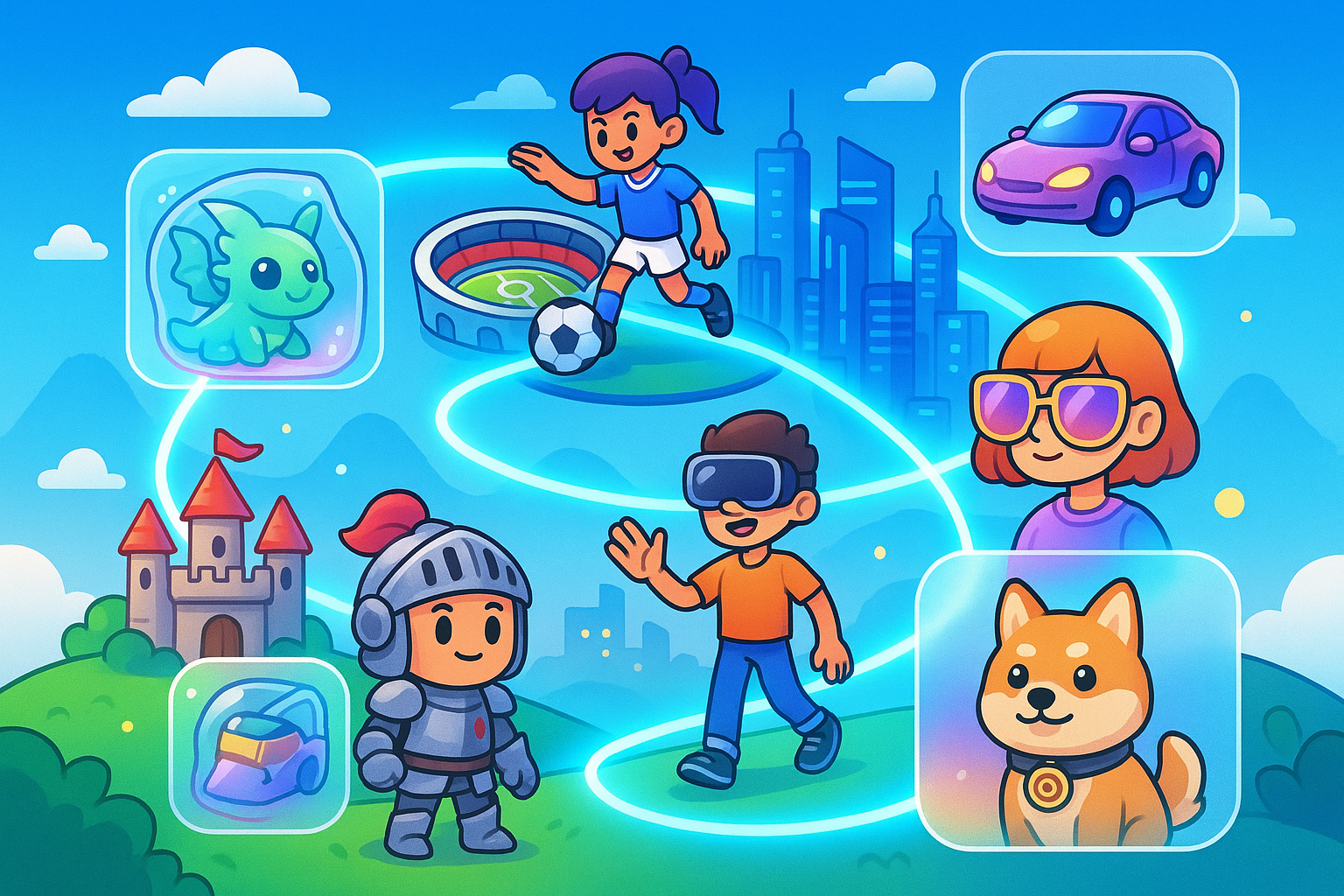Demystifying Crypto in Gaming: A Simple Explanation
Remember the good old days of gaming? Hours spent leveling up, collecting rare items, and maybe even trading them with friends. But what if those items truly belonged to you, not just the game company? What if your in-game achievements could translate into real-world value, or if you had a direct say in the game's development? This isn't science fiction anymore; it's the promise of crypto in gaming.
For many, the terms "crypto," "blockchain," and "NFTs" sound intimidating, like something only tech wizards or finance pros can understand. But at its core, integrating these technologies into gaming is about giving power back to the players. It’s about building new economies, fostering deeper communities, and creating truly innovative gameplay experiences. Let's strip away the jargon and explore what all the fuss is about, simply and clearly.
The Foundation: What is Blockchain, Really?
Imagine a massive, unchangeable digital ledger, shared across a vast network of computers. Every transaction, every new piece of information, is recorded as a "block" and added to a "chain" of previous blocks. Once a block is added, it’s practically impossible to alter or remove it. This is blockchain in a nutshell. It’s transparent, secure, and doesn't rely on a single central authority like a bank or a game server. Instead, everyone on the network helps maintain and verify it.
Think of it like a community-run spreadsheet that nobody can cheat. This fundamental technology is what enables everything else we’ll discuss. It’s the bedrock of digital scarcity and verifiable ownership in the digital realm.
Crypto, Tokens, and NFTs: Your Digital Assets
When we talk about "crypto" in this context, we're usually referring to digital assets that operate on a blockchain. These come in a few main flavors:
- Cryptocurrencies (e.g., Ethereum, Polygon): These are the native coins of a blockchain, often used to pay for transactions (like gas fees) or as a general store of value. Many gaming ecosystems are built on top of existing blockchains like Ethereum or Polygon, using their native cryptocurrencies as a backbone.
- Fungible Tokens: Imagine in-game currency like gold coins or gems, but instead of existing only within one game's servers, they exist on a blockchain. These are "fungible," meaning each unit is interchangeable with another – one gold coin is exactly like any other gold coin. These can be used for in-game purchases, rewards, or even traded on external marketplaces.
- Non-Fungible Tokens (NFTs): This is where it gets really interesting for gaming. An NFT is a unique digital certificate of ownership, stored on a blockchain. Unlike fungible tokens, each NFT is one-of-a-kind. Think of it like a digital deed for a house, or a unique serial number for a collectible item. In gaming, NFTs can represent anything unique: a specific rare sword, a character skin, a plot of virtual land, or even an entire game character. Because they're on a blockchain, you truly own them. They can't be duplicated, taken away by a game developer (unless designed that way), or easily forged.

Play-and-Earn: Beyond the Grind
The early days saw a lot of buzz around "Play-to-Earn" (P2E) games, where the primary motivation seemed to be earning crypto. While some of these initial ventures faced challenges with sustainability and fun-factor, the concept has evolved significantly. Today, the focus is shifting to "Play-and-Earn" or "Play-and-Own," emphasizing that the game should be enjoyable first, with the earning aspect as an added benefit.
In a Play-and-Earn game, you might earn fungible tokens for completing quests, winning battles, or contributing to the game's ecosystem. You might also find or craft unique NFT items. These tokens and NFTs aren't just stuck within that one game; because they're on a blockchain, you can often sell them on open marketplaces, trade them with other players, or even potentially use them across different games that integrate with the same blockchain. This transforms players from mere consumers into active participants with tangible stakes in the game's economy.
True Ownership: Your Assets, Your Rules
Perhaps the most revolutionary aspect of crypto in gaming is the concept of true digital ownership, primarily enabled by NFTs. In traditional games, when you "buy" a digital sword or a character, you're usually just purchasing a license to use it within that game's ecosystem. If the game servers shut down, or your account gets banned, those assets vanish. They are owned by the game company, not you.
With NFTs, the asset is yours. It exists on the blockchain, independent of the game's servers. If a game studio goes out of business, your NFT sword still exists in your digital wallet. Another game could potentially integrate it, or you could sell it. This shifts the paradigm from renting digital goods to truly owning them, fostering a more robust secondary market and giving players unprecedented control over their digital possessions.

Community Governance: The Rise of DAOs
Imagine a game where players collectively decide on new features, balance changes, or even how development funds are spent. This is the promise of Decentralized Autonomous Organizations (DAOs) in gaming. A DAO is an organization structured on a blockchain, governed by its community members, usually through voting with special governance tokens.
In a gaming DAO, players who hold governance tokens can propose and vote on important decisions, directly influencing the game's future. This moves control away from a single corporate entity and towards the very community that plays and loves the game. It’s about building truly player-centric worlds where everyone has a voice.
Beyond the Hype: Other Applications
The innovation doesn't stop at NFTs and P2E. Crypto is paving the way for even more exciting possibilities:
- Fractional Ownership: Imagine owning a tiny piece of a super-rare, expensive in-game item or even a virtual stadium, allowing many players to share in its value and governance.
- Staking: Some games allow players to "stake" their tokens, locking them up to support the network or game ecosystem, and in return, earning rewards, much like earning interest.
- Interoperability and Metaverses: The vision is for digital assets (NFTs) to be usable across multiple games and virtual worlds, creating a true "metaverse" where your digital identity and possessions are truly portable. While still largely a future concept, the underlying technology is being built now.

The Bright Side: Benefits for Players and Developers
- Player Empowerment & Ownership: As discussed, players gain true ownership of their digital assets, leading to a stronger sense of investment and control.
- New Monetization Models: Developers can explore innovative ways to fund games, reward players, and create sustainable in-game economies through token sales, royalties on secondary NFT sales, and more.
- Transparency & Trust: Blockchain's inherent transparency means that item scarcity, transaction histories, and game rules can be publicly verified, fostering greater trust between players and developers.
- Community Building: DAOs and shared economic incentives can lead to incredibly engaged and loyal communities who feel a real stake in the game's success.
- Accessibility: Open marketplaces allow anyone with an internet connection to participate in game economies, regardless of geographic location or traditional banking access.
Navigating the Challenges: What to Watch Out For
It's not all smooth sailing, and the crypto gaming space has its share of hurdles:
- Volatility: The value of cryptocurrencies and NFTs can be highly volatile, meaning earnings can fluctuate wildly. This makes it challenging for some to rely on it as a primary source of income.
- Scams and Rug Pulls: Unfortunately, the nascent nature of the space has attracted bad actors. Projects with poorly defined economics or outright fraudulent intentions can lead to significant losses for players. Thorough research is crucial.
- Environmental Concerns (Evolving): Early blockchains, particularly Proof-of-Work systems like the original Ethereum, were energy-intensive. However, many new gaming blockchains and upgraded existing ones (like Ethereum's move to Proof-of-Stake) are significantly more energy-efficient, addressing these concerns.
- User Experience: Getting started with crypto gaming can still be complex, requiring knowledge of wallets, seed phrases, and gas fees. Simplifying this experience is a major focus for developers.
- Regulatory Uncertainty: The legal landscape around crypto is still evolving, which can create uncertainty for both developers and players.
- "Fun First" Imperative: As mentioned, early P2E games sometimes prioritized earning over enjoyable gameplay. The industry is learning that for long-term success, games must be fun and engaging on their own merits.
The Future: A Glimpse Ahead
Crypto gaming is still in its early stages, often compared to the internet in the early 90s. While there have been boom and bust cycles, the underlying technology and its potential for innovation remain incredibly strong. We're seeing a shift towards higher-quality games from established studios, a focus on sustainable economies, and more user-friendly interfaces.
The vision of interconnected digital worlds where your unique digital identity and assets seamlessly transition between experiences is compelling. As the technology matures, becomes more accessible, and developers prioritize genuine fun and robust game design, crypto in gaming has the potential to fundamentally redefine how we play, own, and interact in virtual spaces.
Conclusion: Your Invitation to Explore
Demystifying crypto in gaming isn't about becoming a blockchain expert overnight. It's about understanding the core ideas: true digital ownership, player empowerment, and new economic possibilities. While challenges exist, the promise of a more open, transparent, and player-driven gaming future is a powerful one. So, next time you hear about NFTs or tokens in a game, remember it's not just hype – it's a glimpse into the evolving landscape of digital entertainment, inviting you to be more than just a player, but an owner and a stakeholder.

